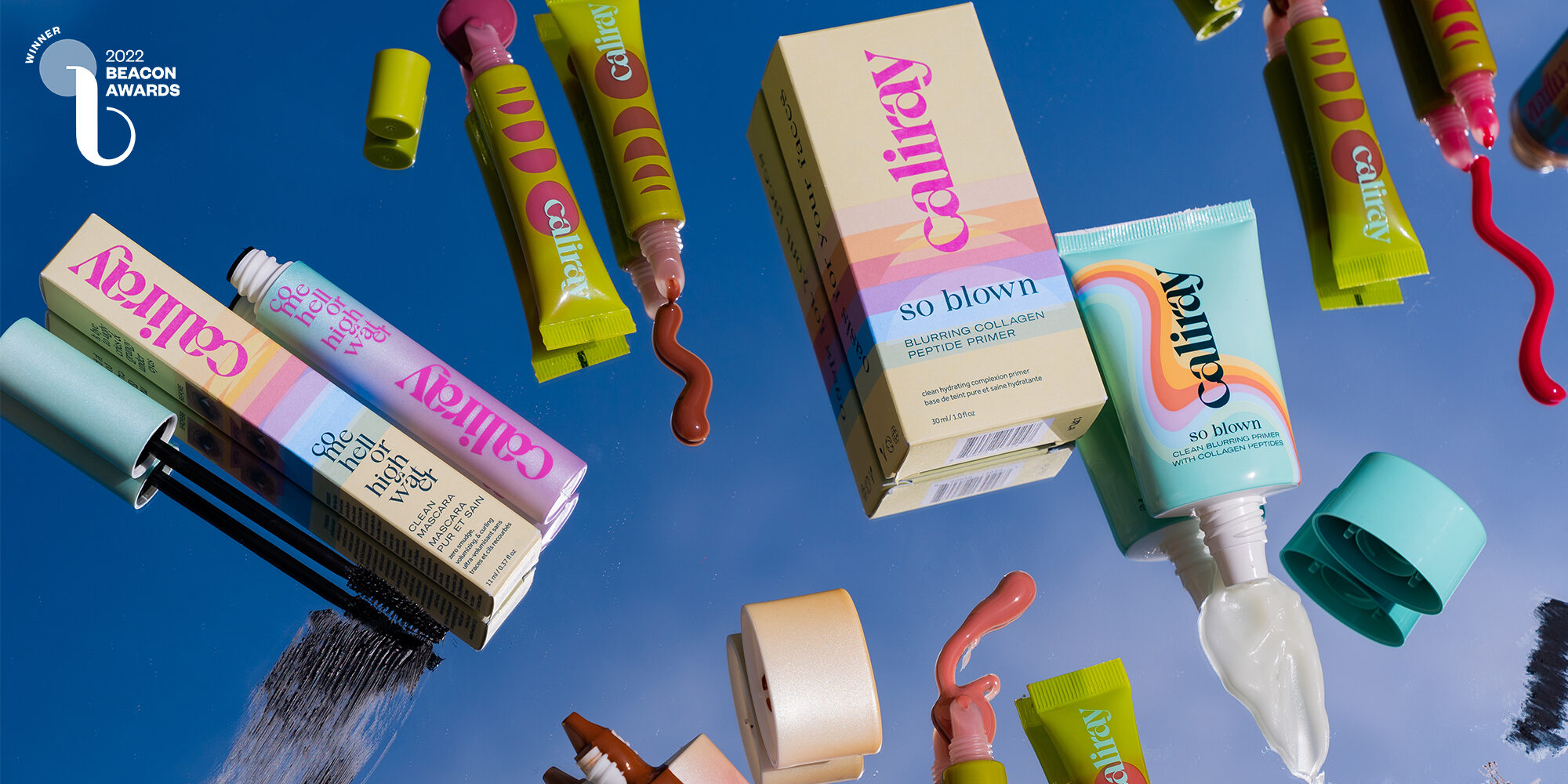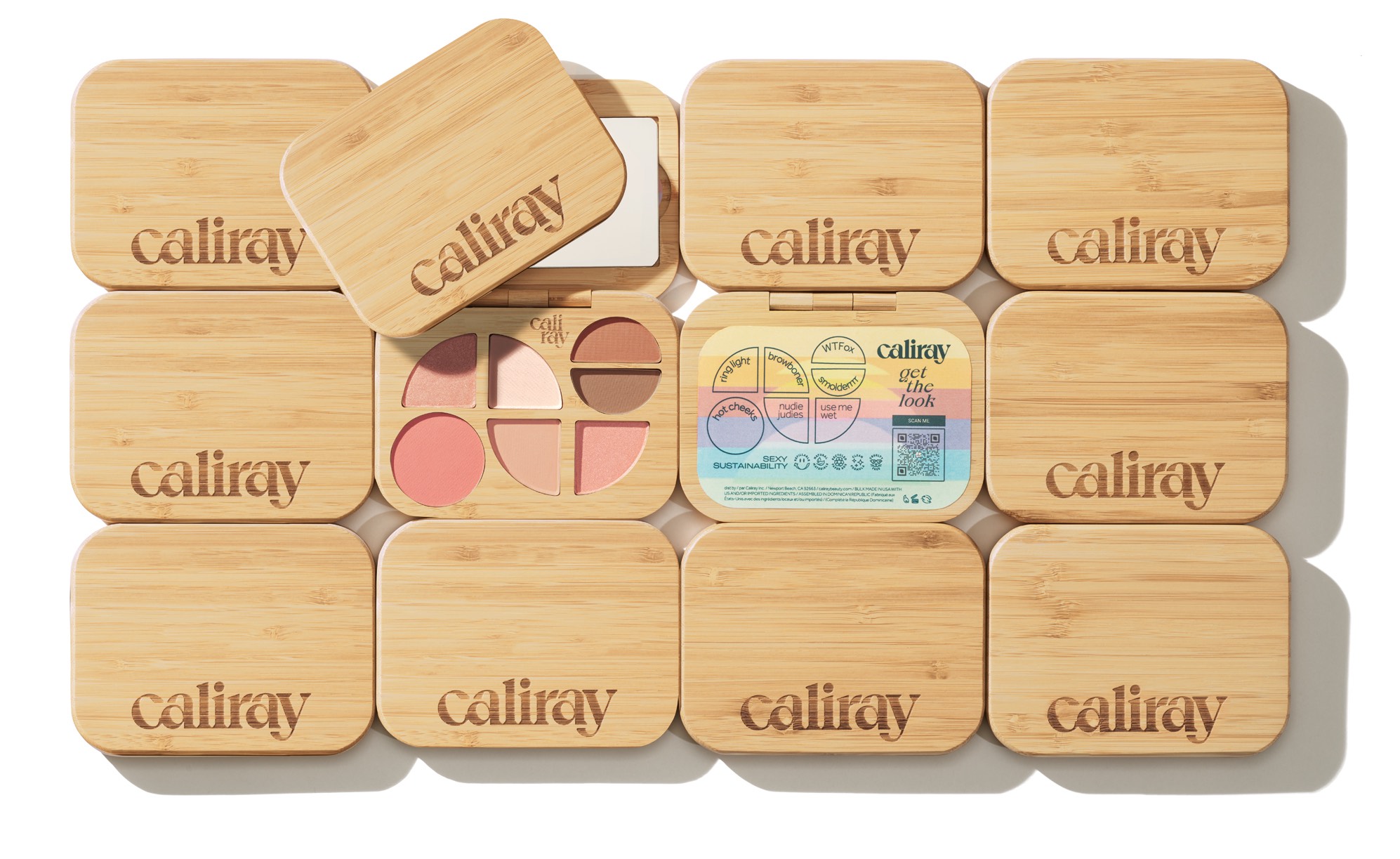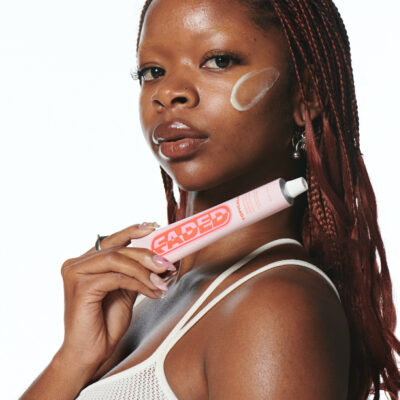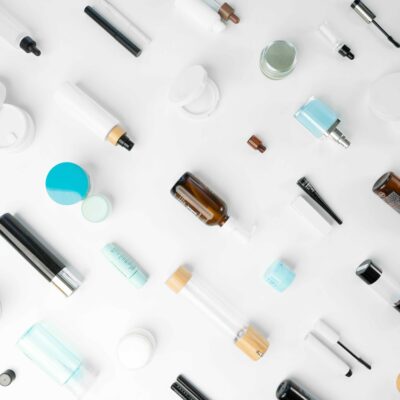
How Caliray Founder Wende Zomnir Is Reinterpreting Urban Decay Classics For Today’s Clean Beauty Shoppers
Today, Caliray, the clean and eco-conscious beauty brand from Urban Decay founding partner Wende Zomnir and Jenna Dover, who previously worked in global business and growth strategy at Urban Decay and Frost & Sullivan, is launching the $48 Endless Sunset Palette, a contemporary spin on Urban Decay’s classic Naked Palette, a set of 12 must-have shades released in 2010. The new palette has seven matte, satin and glowy shades, talc-free formulas brimming with skincare ingredients like rice extract, and refillable bamboo packaging with a reusable steel mirror and recyclable aluminum eyeshadow pans housed in a post-consumer recycled paper box.
It’s the latest Urban Decay staple that Zomnir has reinterpreted at Caliray, which launched in 2021 and is available at Sephora. The brand also sells $33 Surfproof Setting Spray, a modern take on Urban Decay’s acclaimed All Nighter Setting Spray. It’s extended beyond updated Urban Decay staples with products like $40 lightweight foundation Freedreaming Skin Wellness Diffusing Tint, $24 tubing mascara Come Hell Or High Water and $19 lip plumper Glazed & Infused. This year, Caliray has secured series A investment and, according to industry sources cited by publication Women’s Wear Daily, is on track to generate $20 million to $25 million in retail sales.
Beauty Independent spoke with Zomnir, winner of the 2022 Industry Icon Beacon Award, about her tenure at Urban Decay after L’Oréal acquired it in 2012, Caliray’s team, clean beauty, fundraising, the rationale behind Endless Sunset Palette, and why sustainability isn’t a leading motivator of beauty purchases now, but she’s optimistic it will be in the future.
Let’s start out with the latest product, Endless Sunset Palette. Is that Caliray’s answer to the Naked Palette?
The Naked Palette was this epiphany I had when I was a working mom and traveling all the time. I was like, “I need a little perfect palette that I can throw in my bag, and then I can throw in my crazy Urban Decay eyeshadows that are going to match my outfits to go along with it in my bag, but I need this base palette so I don’t have to think.”
I asked some other people that worked on my team, “Hey, what would your base palette look like? If you were on a desert island, what would you take?” That’s how Naked was born. I think you always need a base palette that can do everything for you.
This takes it to another level. I don’t think it’s an answer to Naked Palette, it’s just my latest collection of must-have shades that work well to create a bunch of different looks, and then I don’t have to think about it. I’ve simplified even more with Caliray. I am trying to make beauty even easier.
You stuck around at Urban Decay for longer than one might’ve expected after the L’Oréal acquisition. Did you stick around longer than you expected to?
I would’ve never thought I would’ve stuck around that long. I had a great experience, and it was a great opportunity for me. I learned a lot from L’Oréal. I had a lot of great interactions. We were in Newport Beach, and West Coast beauty wasn’t that big when we started. It was a little island, and it was pretty cool for me to meet a lot of people in the industry and learn.
We were also expanding globally. I got to open new markets, meet people all over the world. I went to high school in Belgium, so it was really cool for me to go back to Europe. I felt it was a good path, we were really successful, and L’Oréal was really happy with us. There wasn’t a lot of interference. I think now, when strategics buy brands, they tend to jump in a little sooner, but we were really left to operate just as we were for a really long time, so I stayed.
When did you start thinking about leaving?
A couple of things happened. We decided it was time for Urban to really fully integrate into the L’Oréal system. That was really going to change the way we operated. Also, L’Oréal decided they were going to open a West Coast office. For me, it was like, “OK, the baby has grown, time to let her go off to college and be herself in the world.”
It was really time for new caretakers and a fresh perspective. It was time for people that knew how to operate in the L’Oréal world. I didn’t grow up in that culture. That was fine with me, but I also didn’t want someone to be telling me what to do either, right?
It was a lovely, easy transition. If they called me now, I’d absolutely help them if they had a question about the brand. I just saw Carol [Hamilton, group head, acquisitions for L’Oréal] at the Sephora Brand Summit, and it was a joy to see her and a lot of other L’Oréal people.
Did you always think you would do another beauty venture?
No, I did not think I was going to do it. The thing about Urban was it was really mission-driven. We were out in the mid-’90s. You remember what beauty was like in the mid-’90s? It was very much like, “Here’s the blonde, beautiful blue-eyed lady, and we’re going to sell you products so you can hope and wish to look more like her.”
With Urban, we came in and we said, “No, beauty should be about self-expression, it should be for men, it should be for women, it should be all about showing the world who you are,” which now is table stakes to start a beauty brand. If you came in and said, “I want to have an aspirational model beauty brand,” you wouldn’t find anyone to take it.
I felt like that mission was accomplished, and I started looking around like, “Well, what’s really the next mission in beauty?” I made a lot of Naked Palettes. There’s probably a lot of Naked Palettes in landfills. What would be the next great thing we could do? Start the sustainability conversation in a real way, not in a greenwashed way, but really trying to do different things, pushing the boundaries and be willing to evolve.

What did you want to come out of the gate with at Caliray to make a statement about who the brand is in the market?
We wanted a sustainable package for everything. We wanted to be able to talk about real numbers. Kudos to L’Oréal, I knew great businesses are built on mascara and foundation. That’s what I wanted to start with.
I wanted the products to reflect the West Coast, free-living California aesthetic. My first thought was, it’s got to be a waterproof mascara. You dive into the numbers on waterproof mascara, and you realize the market’s really small, so what would be the next thing?
I landed on a tubing mascara, and I feel it’s better than waterproof for most people’s lives. You get the benefits of waterproof without the harshness on your lashes, and that felt more right to me. Then, what’s a laidback, easy, don’t think about it, just live your life approach to foundation? That was our Skin Tint.
When you thought about sustainability at the brand, what did you think was important to move the needle for both the beauty industry and the consumer?
No. 1, I don’t think at this point sustainability really moves the needle for a customer. I think it’s product. Sustainability is important, and it will get there. People didn’t think self-expression was important either. At Urban, we were crazy, everything looked weird. It wasn’t beautiful enough. Now, on TikTok, you have to be real. That’s really what we were, and I think sustainability is going to be the same thing.
I think you have to be a part of it. I don’t know that right now in this moment it’s leading or driving purchase decisions. It’s something we have to start making people aware of. From a sustainability standpoint, would I have loved to have done everything completely circular and refillable? Yes. Is that something the customer’s going to buy right now? Is that something I can get scale at a retailer like Sephora? No. Is that something eventually we would love to work toward? Yes.
You always have to view these things as a journey. I’d love to draw a line in the sand, but I also have to be pragmatic. How can I start to take the beauty customer along this journey of sustainability? How can we start this conversation and go, “My mascara is 100% ocean plastic. Isn’t that cool? What’s the next step?”
Are you building the team at Caliray differently than you did at Urban Decay?
The team here is really different. Who would’ve thought that one of your first employees would need to be a content creator back in the day? That’s really different. Now we are in this really interesting gig economy, the beauty industry is bigger, and there’s more services and agencies available to help you.
You’re able to pick and choose versus having to bring on bigger teams right away, which is great for a small startup brand. I really encourage anyone to really look at your headcount and keep it pretty minimal if you can because your needs are going to change so quickly as a small brand.
We have a tiny team of six or seven. I think your finance and operations should be in-house. Your marketing should be in-house, and your branding and some level of content and social, but there are lots of great people with amazing beauty experience that you can tap into for PR, for influencers and media buying.
One of my hires is [VP of marketing and strategy Erica Wohlwend]. She’s a former L’Oréal person, and I really valued the discipline that L’Oréal puts into those marketing people when they join that program and start working their way up. Not only do they learn about branding, but they’re digitally savvy. They keep training and keep learning. That’s why I hired someone from L’Oréal. She’s had other experience since, but I just know what great training that is. I wanted to tap into that.
Caliray recently raised a series A round of funding led by True Beauty Ventures. Why was it the right time to fundraise?
Now the time’s right because we spent a year in Sephora. You want to see, is this a thing? Is this going to work? Do people like it? Is it going to sell? Once we realized we had something, then you have to accelerate your business fairly quickly to be successful. We decided to fundraise because we were like, “OK, we’ve got something, now let’s step on the gas.”
Because of the success you’ve had, you’re obviously important to the pitch when you are talking to investors, but what else do you think helped convince True Beauty Ventures co-founders Rich Gersten and Cristina Nuñez to back Caliray?
The most important thing you can do when you’re fundraising is to build a relationship. I actually have known Rich for a really long time. He was at Catterton when we did the Urban Decay private equity deal [with Castanea Partners]. I really liked Rich, and I felt like he would’ve been a great partner then. We felt a little bit like the stars aligned here. Also, I think they look at this, and they’re like, “We’re going to make money on this.”
What do you believe will be growth drivers for the brand?
Our setting spray is going to all doors. It’s been online, and it’s been overachieving. To have a clean setting spray with real skincare benefits and differentiation is pretty cool. That is probably one of my A-plus launches along with the palette.
I don’t know if there was a great clean setting spray out there that really left you hydrated, has a lot of skin benefits, fine mist and proven long wear. And the clean Endless Sunset Palette is pretty cool. It’s made of bamboo. I composted it in my Lomi and put it in my garden on some flowers, and there’s flowers growing out of it now.
Having been just a year at Sephora, we have a lot of runway left at Sephora. The biggest thing for me is to have a more visible space at my retailer so that I can have more real estate to talk about the sustainability message. I haven’t thought a lot about where to go next, but I feel like it would be interesting to start talking about this in other markets alongside Sephora. My plan is to get more space, have more product innovation and continue the journey with Sephora for right now.
A lot of the 1990s and 2000s trends you saw when you were at Urban Decay are coming back now. What shouldn’t come back?
Let’s hope that the thin brows don’t come back. How many years have we all spent growing our brows out? I’m pretty free in my body. In the ’90s, Vogue was shooting for a little profile on me, and they sent this makeup artist over. He is like, “I’d love to do your brows.” I was like, “OK, great.” He is well-known brow guy.
I sat there forever, and I was like, “What is he doing?” I had the thinnest little line, and I felt naked. I felt more exposed than if I had taken my top off, and it really took a long time for them to grow back. Then, I did the full Calvin Klein and bleached them out. Anyway, I’m so happy they grew back. I don’t want that to come back.
I do think what’s cool about the ’90s trends is that we get to mix a brown lipstick or a grungy eye, but we get to mix it with a foundation that’s more like glowy and less cakey. We can mix the technology of today with some of the color trends from the ’90s, which is pretty fun. I look back at the eyes I did in the ’90s, and everything is round, and it’s a very ashy and grayish. Now, we could use our new eye shapes, but maybe with some cool ’90s colors and get the vibe, but keep a more evolved-looking beauty.
There’s been debate around clean beauty. How do you view clean beauty?
What’s cool about being at Sephora is that they have set a standard for clean, and it’s all about being transparent with the customer. They’re not saying, “Just because it’s organic, it’s clean,” and they’re not saying, “Just because it’s a synthetic, it’s not clean.” They’ve been pretty good about, “Hey, what’s harmful to human health?” They’ve published their standards. It’s very transparent.
If you’re a brand, you can say, I meet this, and then also I’ve added in these things that are important for me to take out for whatever reason. I think it’s a pretty good starting point for a standard because there are so many brands at Sephora.
Whether it’s clean or sustainable beauty, are there changes you think should be made going forward?
I don’t know that we want the government to step in and say, “This is defined as clean.” I think I like the industry being responsible, but I think what it comes down to is brands being really transparent about what they’re claiming. On formulation, publishing ingredient lists, being really clear on sustainability, saying what it is.
I don’t think you can vac-metalize PCR and call it sustainable, so you shouldn’t call it PCR. We just have to be transparent about what we’re doing. I buy pencils from a pencil manufacturer, and they will not make the caps out of PCR, only out of virgin. I just feel like I have to tell my customer that.

You mentioned sustainability isn’t driving purchases today. What is driving your customer and the beauty shopper today?
For us, it’s this idea of performance clean. No. 1, people want great makeup. They want performance, and we’re trying to offer them performance clean products, a mascara that is zero smudge, a setting spray that lasts, talc-free shadows that look beautiful and blend nicely. SO Blown Primer sold out because [consumers] saw the before-and-after on TikTok. They saw how nice it made your skin look, so they bought it. Ultimately, it comes down to, what’s it going to do for me?
Sustainability, it’s important to people, but they don’t have a lot of awareness about what is sustainable. Why does this matter? Do I have to make a tradeoff? It’s just a learning process. Like I said, we just want to take them on that journey with us and talk about it. I don’t want to give them substandard product. I have to get really creative about how to package things.
What are you looking forward to in terms of packaging?
The fact that we’re going to see more of these Pact recycling centers in Sephora to be able to have people recycle their beauty empties. We talk about [recycling with Pact] on our website. It hasn’t been a program that people have jumped on. You can order a shipping label for us to send your beauty empties back. I’ll just be super straight, we haven’t had a lot of people order the label. That’s OK because right now we’re just talking about it.
The more people talk about it, the more important it becomes. The conversation gets elevated to, “Oh, what’s that bin over there? Oh, you can bring your beauty empties back.” The fact that it’s going to be in Sephora doors is meaningful. That’s going to be a big game changer. It’s really about visibility and accessibility.
Sustainability should be this joyful experience. It should be not gloom and doom. It shouldn’t feel onerous. I think making it easy and accessible is the answer to that. About 15 years ago, I took all the parabens out of products at Urban Decay. I put on the front of the box “paraben-free.” Nobody cared, but I cared. I just think it’s a matter of time. Things change, and you can change the way people look at it. I think that’s the benefit of having a little hindsight.
What’s something that you did in your career that you warn other entrepreneurs against?
At the beginning of Urban Decay, I thought, “I’ll make cool stuff, people will love it and it’ll be great.” You don’t think about the operational side of things and how important operational excellence is. It’s really, really, really important that you take care of your operations and finance. I know that seems like so obvious, and yet it’s something that people still fail to ignore.
Beauty is really interesting business because it’s where art and commerce meet. Fashion is more of an art business. Tide Pods are definitely a commerce business. Beauty is in between. Like fashion, it’s art. You put it on your body, it sits on your vanity. It says something about who you are. Also, if it works, you’re going to buy it again and again like Tide Pods.
It’s both art and packaged goods, and you have to really remember that when you’re building a beauty business. That’s what makes the business so fascinating and so challenging at the same time. Those minds in your organization, they have to be given equal weight in order to be successful.
Do you think Caliray will have a similar trajectory to Urban Decay and end up at a company like L’Oréal?
I think companies like L’Oréal have sustainability standards they need to meet. It wouldn’t surprise me, and I actually wouldn’t be sad about it because I feel like they’re really good at broadcasting a message globally, and it’s an important message.
What’s interesting about sustainable products is you really have to build them from the ground up. It’s not like, “Oh, well, I’m just going to change out this cap, and now it’s sustainable.” There’s a lot of choices you got to make about a product. To build it from ground zero is really important to make it as sustainable as it can be. Maybe that’s something that a big strategic would want a part of, but there’s a lot of new up-and-coming players in this industry, and maybe it ends up at a place like that.





Leave a Reply
You must be logged in to post a comment.